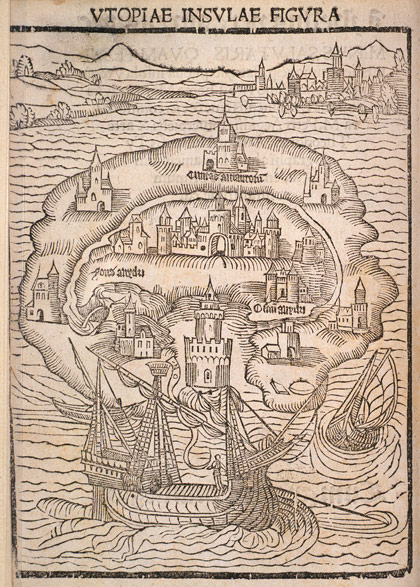Fr : version française / En: english version
mheu, Historical Museum of the Urban Environment
The Island of Utopia
Thomas More

Louvain edition, page 2
1516
Engraving
© New York Public Library
View this work in the exhibition Babel to Dubai: Urban Utopias
The work
First published in 1516, Utopia is without doubt one of the most celebrated works of the 16th century. The book received even greater exposure thanks to new developments in printing and was a huge success in Europe (initially in Paris and Louvain, and later in the UK). Largely inspired by Plato's Atlantis, Utopia comprises both a critique of the English government of the time and a highly detailed description of the morals, institutions and living conditions of the population of an imaginary island, living under what is portrayed as an ideal political system. Although the author deliberately chose to create a fictitious setting (U-topia*), it is hard not to draw parallels with the discovery of the New World just a few years prior to the book's appearance.
* Thomas More drew on the ambiguity of the English pronunciation of the Greek prefixes "ou" and "eu": ou topia, meaning no place, and eu-topia, meaning good place.
The artist
The Englishman Thomas More (1478-1535) was a leading 16th century humanist.
A friend of Erasmus and a trained lawyer, he was fluent in Latin and Greek and led a brilliant political career in the service of King Henry VIII. In 1516, he wrote his celebrated work Utopia, or The Best State of a Republic, which quickly enjoyed huge success in Europe (translated into English in 1551). A staunch catholic, More met a tragic end when he refused to sign a declaration making the king the supreme head of the Church of England, thereby splitting with the Catholic Church under the authority of the Pope in Rome: More was tried for treason and was condemned to death by beheading.